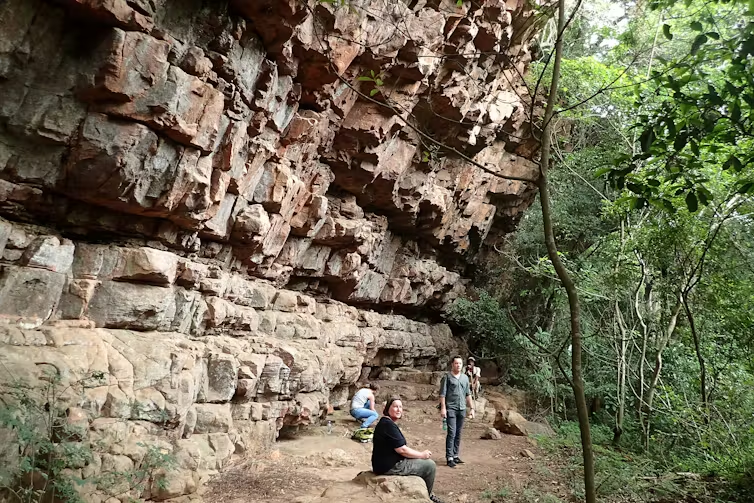In a riveting archaeological revelation, the thawing ice patches of Mount Edziza Provincial Park, Canada, have unveiled a cache of ancient artifacts dating back an astounding 7,000 years. These perishable relics, primarily connected to the Tahltan, one of Canada's indigenous First Nations, offer unprecedented insights into their daily lives and customs, weaving a new chapter into the vibrant tapestry of regional human history.
Situated in a volcanic landscape of immense cultural significance to the Tahltan, Mount Edziza Provincial Park has served as a seasonal hunting ground for centuries. Fueled by the prospect of discovering preserved perishable artifacts within the receding ice patches, researchers embarked on a survey following two winters of exceptionally low snowfall.
A 3,000-year-old pair of stick wrapped in animal hide found in the ice. Photo from Brendan Gray
The discovery of Artifacts
As the summer sun triggered the ice's retreat, archaeologists unearthed a staggering 56 perishable artifacts scattered across nine ice patches in the park. Birch bark containers, projectile shafts, walking staffs, and wooden items crafted with precision emerged, alongside artifacts hewn from animal remains, including a meticulously stitched hide boot and intricately carved antler and bone tools.
A 2,000-year-old bark container with visible stitching found in the ice.
Unique Bark Containers
Among the discoveries, two bark containers stood out. One, dating back 2,000 years, showcased intricate stitching, offering a glimpse into ancient craftsmanship. The other, over 1,400 years old, revealed sticks stitched into its sides, hinting at a purpose as a reinforced basket for transporting heavy loads.
The 6,200-year-old stitched animal hide as it looked in the melting ice (A) and after unfolding (C). A close-up photo (B) shows the knotted sinew and a stitch. Photos from Brendan Gray, Genevieve Hill and Megan Doxsey-Whitfield
6,200-Year-Old Stitched Animal Hide
A remarkable find included a 6,200-year-old artifact made from stitched animal hide, identified as a moccasin-like boot. The artifact displayed the fusion of different hide thicknesses, unveiling the sophisticated craftsmanship of its ancient creators.
5,300-Year-Old Antler Ice Pick
In a separate ice patch, a 5,300-year-old antler, shaped like an ice pick, was uncovered. Its three-pronged design, with a sharpened point, a blunted end resembling a hammer, and a presumed handle, showcased the versatility of ancient tools.
One of the many obsidian artifacts found in the melting ice. Photo from Duncan McLaren
Conservation and Further Study
Surrounded by millions of obsidian artifacts, the perishable treasures were carefully transported to a British Columbia museum for climate-controlled conservation and extensive study. This meticulous process aims to unravel more details about Tahltan technology, lifestyles, and cultural practices.
The melting ice in Mount Edziza Provincial Park has gifted us a remarkable window into the past, enabling archaeologists to excavate and preserve the narratives of Canada's indigenous First Nations. As ongoing research peels back the layers of time, these discoveries promise to deepen our understanding of the region's history and the ingenious ways of its ancient inhabitants.










